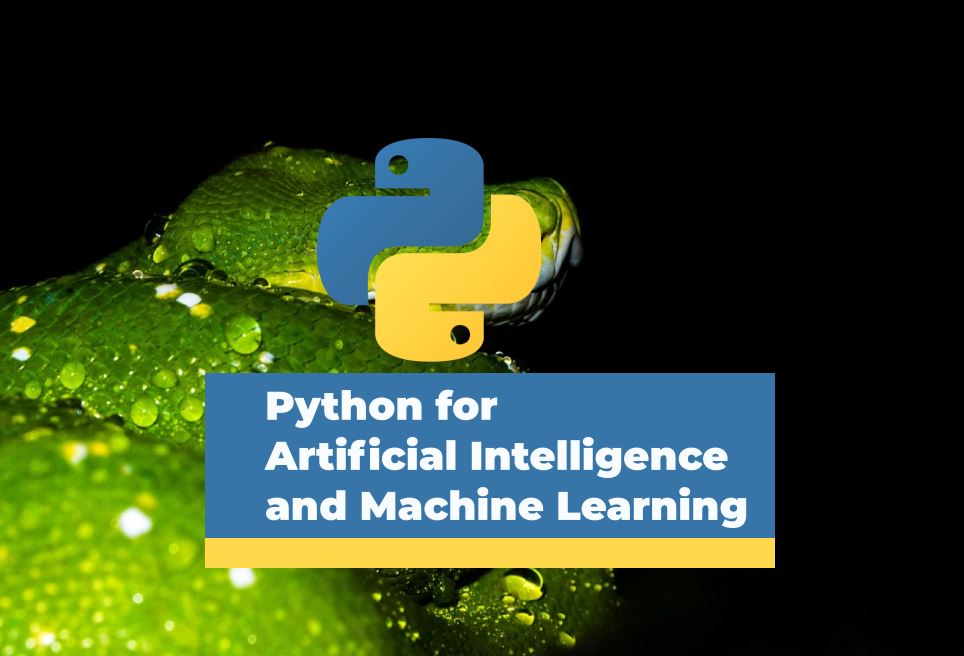Machine Learning and Artificial intelligence hold out the future. It is active in every field, be it Medicine, IT and software or fintech, every field is upgrading through Artificial intelligence and Machine Learning. Every individual and organisation needs better personalization, smarter recommendations, and improved search functionality. Artificial Intelligence has enhanced the user experience and created values across many industries.
AI and Machine learning programmes are different from traditional software projects. It requires a different technology stack and skillset and it needs deep research. To implement this technology, it is necessary to use programming languages that are stable, flexible and with various tools available.
Python offers everything which AI and Ml require under one roof. From development to deployment and maintenance, Python helps developers be productive and confident in the software they create.
AI and Ml based projects are simple and they have consistent access to great libraries and frameworks. For this learning flexibility, platform independence and a wide community are required. Therefore Python is famous in the overall language community.
Today Artificial Intelligence and Machine Learning went far beyond science fiction ideas. It became a necessity. Being widely used for processing and analysing huge volumes of data, AI helps to handle the work that cannot be done manually anymore because of its significantly increased volumes and intensity.
Python is used for processing and analysis. Its Artificial Intelligence and Machine Learning are applied across various channels and industries, big corporations invest in these fields and the demand for experts in ML and AI grows accordingly. As per Indeed.com, Python is one of the trendiest languages for AI and ML.
Where to Learn Python:
Python is one of the most famous programming languages. Various training institutes and colleges are offering various training programs on Python. One can sit at their place and learn Python through online training programmes. Various institutes and online platforms offer various training programs such as machine learning courses, AI training programs, data science programs. With this specialised training, you can learn Python as a subject. There are various Master degrees, professional certification programmes in Machine learning with python training, AI with python training, Data science with python training from prestigious institutes. They offer weekend classes for working professionals with real-time projects and online examinations and certifications.
Importance of Python: Reason to Learn Python for Artificial Intelligence and Machine Learning
Simple and consistent
Python is concise and readable code. Python’s simplicity allows developers to write reliable codes and systems with the complex algorithms and versatile workflows of AI and ML. It will simplify the work of developers by putting all their efforts into solving ML problems instead of focusing on technical language problems. Adding to this python is an easy and simple programming language that appeals to many developers as it is easy to learn. It is adopted by most developers to build models for machine learning. There are a lot of sample Python datasets to practice on when learning new concepts.
Many developers think python is a more in-built programming language than any other programming language. Others think of numerous frameworks, libraries, and extensions that make it easy to implement various features. When multiple developers are involved, python is used for collaborative implementation. Python is a generic language, it can perform a variety of complex machine learning tasks. It also enables you to build prototypes quickly that allows you to test your products for machine learning purposes.
Wide range of libraries and frameworks:
AI and Ml algorithms are tricky and it consumes a lot of time for developers. A well-structured and well-tested environment is crucial for developers to find the best coding solutions. The python frameworks and libraries will help programmers and developers time in development. Python is full of tech stacks and vast library sets for Artificial Intelligence and Machine Learning.
- Keras, TensorFlow, and Scikit-learn for machine learning
- NumPy for high-performance scientific computing and data analysis
- SciPy for advanced computing
- Pandas for general-purpose data analysis
- Seaborn for data visualization.
A great library module or a group of modules published by different sources like PyPi includes pre-written code which allows users to reach functionality and allows them to perform different actions. It offers entry-level stuff in the development libraries, which helps developers not have to code them from scratch every time. Machine learning requires continuous data processing and python libraries will allow you to access, handle and transform data every time you need it. Python has various libraries which are specialised in different areas.
- Scikit- learn: This library is used to handle clustering, linear and logistic regressions, regression, classifications and many basic ML algorithms.
- Pandas: This library is used mainly for high-level data structures and analysis. This library allows you in merging and filtering of data, and it will help you in gathering external sources like excel.
- Keras: This library is mainly used for deep learning. This library allows you for fast calculations and prototyping as it uses the GPU in addition to the CPU of the computer.
- TensorFlow: This library is made for working with deep learning. It helps you to set up, train and utilise artificial neural networks with massive datasets.
- Matplotlib: Matplotlib: This library is used to create 2D plots, bar charts, graphs, and other forms of visualisation.
- NLTK: This library is useful for developers, who work on computational linguistics, natural language recognition and processing.
- Scikit-image: This library is majorly used for image processing.
- PyBrain: This library networks, unsupervised and reinforcement learning.
- Caffe: This library is used for deep learning. It allows you to switch between the CPU and GPU. It also helps in processing 60+ mln images a day using a single NVIDIA K40 GPU.
- Statsmodels: This library is used for statistical algorithms and data exploration.
There are various classification, regression and clustering algorithms including support vector machines, random forests, gradient boosting, k-means, and DBSCAN, and is designed to work with the Python numerical and scientific libraries NumPy and SciPy. With the help of these solutions, you can develop the product easily and quickly. You can take the advantage of the existing library to implement the necessary features.
Python is widely used in Artificial intelligence for cases and technologies that are best suited for them. It is widely used in Data analysis and visualisation, Machine learning, computer vision, NLP 9 Natural Language Processing). For Data analysis and visualisation, we recommend using NUMPY, SCIPY, PANDAS, SEABORN, for MAchine learning we recommend using TensorFlow, Keras, Scikit-learn, for Computer vision we recommend using OpenCV and for Natural Language Processing we recommend using NLTK, spaCy.
Low entry barrier:
Working in the Machine Learning industry means dealing with a set of data. This data needs to be processed most conveniently and effectively. The low barrier to entry allows multiple data scientists to quickly pick up Python and start using it for AI development without wasting too much effort on learning the language. This programming language will make professionals’ lives simpler as it is easy to learn and learn quickly.
Flexibility
The Python language is a great choice for Machine Learners, Artificial Intelligence and data science professionals. It is widely known for its flexibility as it offers an option of choosing either to use OOPs or scripting. The language doesn’t need to recompile the source codes. As developers can implement any kind of changes and you can see the results quickly. This language can combine Python and other languages to reach their goals.
Python gives flexibility which allows developers to choose the programming styles based on their comfort and they can combine the multiple styles also to solve different types of problems in the most efficient way.
Read Next:
- Building an Android Mobile Game with Python | Is it a Great Idea?
- Why Cybersecurity is Important for Every Business – 7 Reasons



